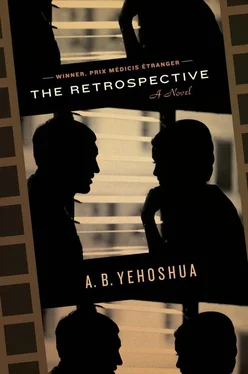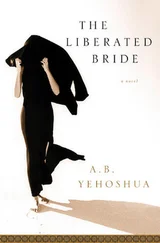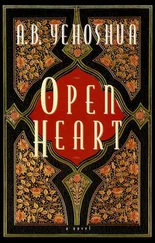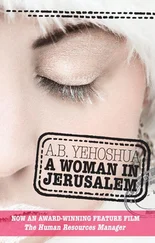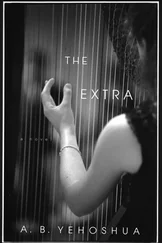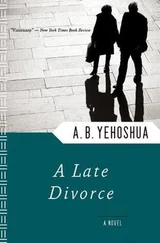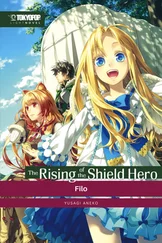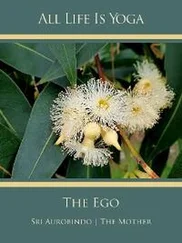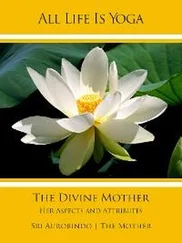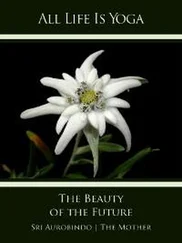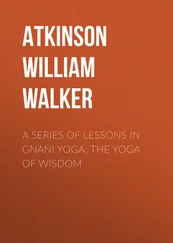“There are Jews in Galicia?”
“You never can tell. There are crypto-Jews everywhere.”
“And what if there were Jews in the audience?”
“They might be offended by the participation of such an animal in the worship of God. We don’t need any protests.”
“The animal is not a participant in anything,” says Moses flatly. “It’s a free and independent animal. A metaphysical animal.”
“A metaphysical animal? Is there such a thing?”
“In any case, that’s how I tried to portray it.”
2
IT IS SUGGESTED to have dinner early, before the screening, lest the animal dampen the appetite, but in the end they stick to the original schedule. The length of the film is finite, but dinner can last indefinitely. Moreover, the elderly mother, weary from her flight, would prefer to see the film while she is still lucid.
The screening room is actually the archive’s recording studio, with the control room included to provide extra space. The screen is small and made of fabric, which rustles slightly in the drafty room.
Juan de Viola introduces the invited guests by name and occupation, the first being the same elderly teacher and theoretician who had, an hour before, with courage and generosity, decorated Slumbering Soldiers with commentary that might transmute a film left for dead into a forgotten masterpiece. The rest are teachers at the institute, vaguely remembered from the previous day’s luncheon, along with a few young people, advanced students. All told, Moses counts twenty strong, crowded around a one-time movie queen who has accomplished her life’s work and now devotes her time to contemplating the works of others. Beside her sits her son the monk, avidly translating Ruth’s words into modern Spanish for his mother, and the latter’s words into ancient Hebrew for Ruth.
Juan asks Moses if he would like to say a few introductory words. Moses hesitates. Dinner is being prepared, and introductions, which invariably prompt reactions, would delay the meal and cause the cooks to burn the food. Better the movie should stand on its own — strange, inscrutable, provocative — and if it incurs opposition, the expert theoretician will again offer his interpretation. And yet the insult, “failed artist,” pecks away at him, so he reconsiders, and although the lights have gone down he stands up and strides toward the screen. “Just a minute,” he says, “perhaps it’s worth saying a few words before the actual film obscures its good intentions. But there’s no need to turn up the lights, I can talk about a film in the dark.” And he invites the Dominican monk to translate his Hebrew into Spanish, so he can express himself more precisely and succinctly.
Manuel at his side, the screen behind him, he faces the silhouetted audience and the projector, its little red switch awaiting action. And there is Moses defending not only himself, but also the screenwriter who borrowed a burning coal from a literary genius.
“We in Israel became aware of Kafka in the fifties, in Hebrew translations of his novels and stories. In those years of ideological intensity, there was something refreshing in his symbolic, surrealistic, absurdist works, which seemed disconnected from time and place and wrapped in the mystery of a writer who died young, in the stormy, chaotic years between the World Wars. After a while, Kafka’s diaries and letters also began to appear in Hebrew, and we found detailed, intimate revelations about a secular Jew who grew up in a traditional home and whose complex identity was bathed in metaphysical yearning. But as opposed to those who interpret every line of his writings in light of his private life and sexual struggles and celebrate every Jewish detail exhumed from his biography, there were many readers, myself among them, for whom Kafka’s cryptic, radiant works transcended the specifics of his personality and inhabited the realm of the universal.
“Trigano, my screenwriter, was drawn to Kafka as a student in high school, when I was his teacher of history and philosophy, and found him to be a steady source of ideas and inspiration. One day he discovered, perhaps in a French translation, a little-known story of Kafka’s, one not yet translated into Hebrew. It was impossible to detach the story from Jewish identity or familiar experience, since the author, who often put clever animals into his stories — monkeys, dogs, mice, even a cockroach — this time, with ironical zeal, placed a small animal, a creature both calm and frightening, into a Jewish synagogue where the narrator himself is one of the worshippers; an animal whose silence, for once, adds new dimension to the riddle of Jewish existence, which is forever a threat unto itself. It is a strange story, unusual even within the corpus of this great writer. In this story he seems to relinquish his anonymity and deliver in first-person plural the testimony of a small Jewish community, in whose synagogue this old creature had lived for many years, an animal that carried inside it a rich Jewish historical memory and perhaps also the gift of prophecy.
“Here, ladies and gentlemen, is how the story begins. I still remember the opening by heart. ‘In our synagogue lives an animal approximately the size of a mongoose. It can often be seen clearly. It allows people to come no closer than a distance of two meters away. Its color is a bright blue-green. No one has ever touched its coat, so nothing can be said about its fur.’ What exactly drew my scriptwriter to this story, I don’t know, but I was swept up in his enthusiasm. A small symbolic animal in a narrative film seemed like a worthy adventure for a young director who believed that Kafka’s genius would protect him.
“Kafka’s story, however, has no narrative line, only the description of a situation, of the relationship of the worshippers to the animal, a relationship that continues from generation to generation. For according to the story, the animal is older than the synagogue and has a secret hiding place inside it, but the noise of the prayers prompts it to dart out of hiding — not to interrupt, but out of anxiety. It knows the noisy prayers are not directed its way, but it remembers something from the past, or is perhaps afraid of the future. In any event, to broaden its angle of vision, it sometimes hangs from the copper curtain rod of the holy ark or, more often, grasps the lattice that separates the upper women’s gallery from the men below and looks down. But unlike the men, who remain indifferent to it, the women worshippers are afraid of it, yet also attracted to it, and they even compete for its attention. Here we have another charming Kafkaesque paradox.”
Moses stops, hesitates, wonders how and why he got carried away by the details of a story that grows sharper in his memory. In the darkness he can make out the sparkle of his listeners’ eyes, but he has no way of judging their attention, so he poses a question to Juan.
“Can I go on? Do we have time?”
“There’s time, Moses, of course” comes the loud reply. “This is an educational institution, not a movie theater.”
“In that case,” the director continues, “to adapt a short and static story into a full-length film we had to do two things. First, create a plot with conflict and crisis; and second, choose an animal, one we could manipulate. The story supplies few details about the animal, apart from its remarkable longevity, its size like a mongoose’s, and its color, which might be natural or possibly a product of the dust and plaster of the synagogue. And since we could not produce a Kafkaesque animal, we naturally enough decided on an actual mongoose, though not an elderly one, hoping it could be trained. We painted its fur, as you shall see, the color of the synagogue wall, in keeping with the story, but added a few thin gold stripes as a mythological touch. For the benefit of the Israeli audience, we had to transplant the synagogue from the sad, fading Diaspora, unaware of the looming European catastrophe, to the new Jewish state, repository of Jewish hopes.”
Читать дальше
